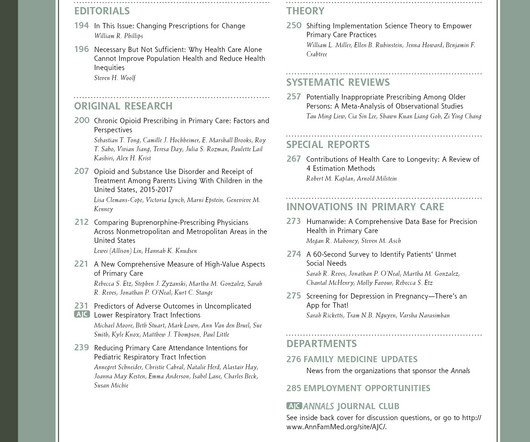Risks and Needs: Lessons Learned from Assessing Patients Willingness to Receive Help for Social Risks in Primary Care [Social determinants and vulnerable populations]
Annals of Family Medicine
NOVEMBER 20, 2024
Objective: To assess the impact of a question on need for assistance with social risk factors identified through routine screening. Setting or Dataset: Secondary data on social needs screening and referral generated through Epic. Study Design and Analysis: Descriptive analysis of secondary data.

















Let's personalize your content